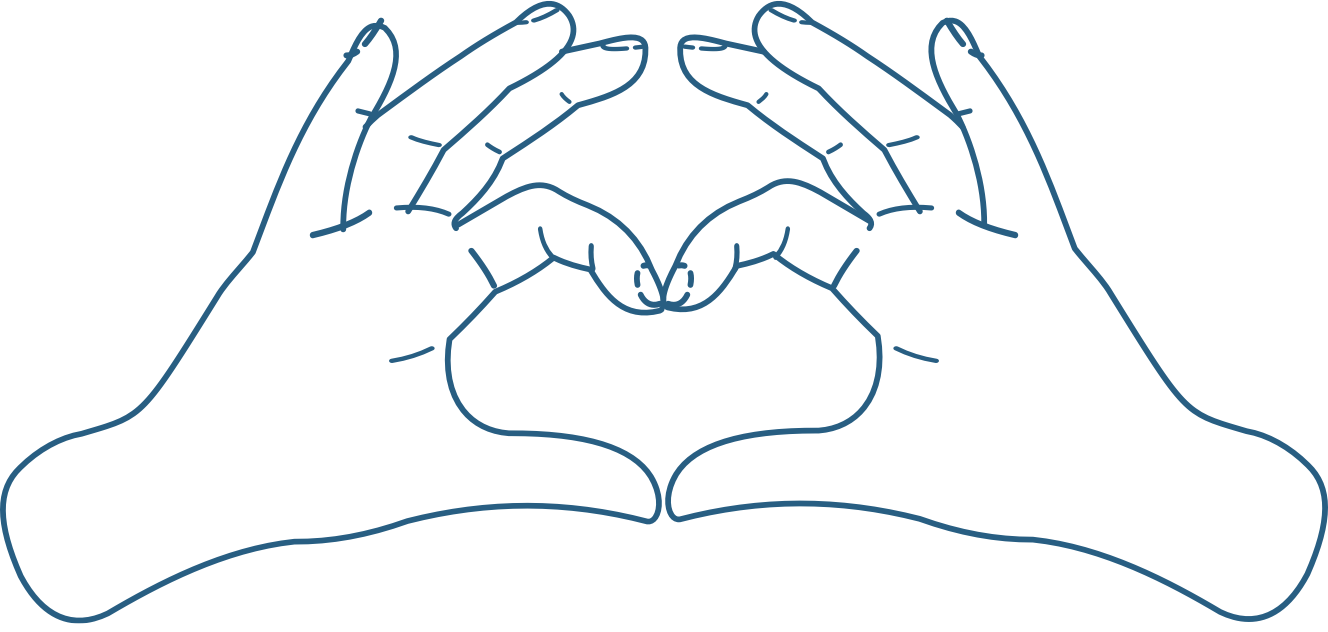What’s the best time of day to lift weights?
Search for an answer to that question online and you’ll learn that there are basically two schools of thought on this issue:
- It’s best to train in the late afternoon or evening.
- It doesn’t much matter when you train.
Proponents of the first position point to studies that show athletes perform better later in the day and claim that if you do the same, you’ll be able to use heavier weights in your workouts and gain more muscle and strength as a result.
Advocates of the second position claim that although most people have better workouts in the evening, your body can also adjust to morning workouts over time, nullifying any benefits of training in the evening.
Who’s right?
Is training in the latter half of the day really superior to training in the first half? And if so, is the difference enough to matter?
Or, can you get equally good results regardless of what time you train?
Keep listening to learn what science says.
Oh and if you like this episode and want to get notified when a new one goes live, head on over to Spotify, iTunes, Stitcher, YouTube, Soundcloud, Podbean, or Google Play and subscribe.
Lastly, if you want to support the show, please drop a quick review of it over on iTunes. It really helps!
Time Stamps:
3:16 – What are circadian rhythms?
4:45 – The sleep-wake cycle
7:21 – The body temperature cycle
9:01 – The testosterone cycle
11:10 – What do studies say about the best time of day to lift weights?
17:26 – Does training in the evening create an optimal hormonal environment for building muscle?
19:11 – What is the best time of day to lift weights?
21:21 – Tips for training in the morning
Mentioned on the show:
What did you think of this episode? Have anything else to share? Let me know in the comments below!
+ Scientific References
- Mora-Rodríguez, R., Pallarés, J. G., López-Samanes, Á., Ortega, J. F., & Fernández-Elías, V. E. (2012). Caffeine ingestion reverses the circadian rhythm effects on neuromuscular performance in highly resistance-trained men. PLoS ONE, 7(4). https://doi.org/10.1371/journal.pone.0033807
- Beck, T. W., Housh, T. J., Schmidt, R. J., Johnson, G. O., Housh, D. J., Coburn, J. W., & Malek, M. H. (2006). The acute effects of a caffeine-containing supplement on strength, muscular endurance, and anaerobic capabilities. Journal of Strength and Conditioning Research, 20(3), 506–510. https://doi.org/10.1519/18285.1
- Astorino, T. A., Rohmann, R. L., & Firth, K. (2008). Effect of caffeine ingestion on one-repetition maximum muscular strength. European Journal of Applied Physiology, 102(2), 127–132. https://doi.org/10.1007/s00421-007-0557-x
- Hayes, L., Grace, F. M., LonKilgore, J., Young, J. D., & Baker, J. S. (n.d.). SALIVARY HORMONE RESPONSE TO MAXIMAL EXERCISE AT TWO TIME POINTS DURING THE DAY. Retrieved December 1, 2020, from https://www.academia.edu/6268365/SALIVARY_HORMONE_RESPONSE_TO_MAXIMAL_EXERCISE_AT_TWO_TIME_POINTS_DURING_THE_DAY
- Souissi, N., Gauthier, A., Sesboüé, B., Larue, J., & Davenne, D. (2002). Effects of regular training at the same time of day on diurnal fluctuations in muscular performance. Journal of Sports Sciences, 20(11), 929–937. https://doi.org/10.1080/026404102320761813
- West, D. W. D., Burd, N. A., Tang, J. E., Moore, D. R., Staples, A. W., Holwerda, A. M., Baker, S. K., & Phillips, S. M. (2010). Elevations in ostensibly anabolic hormones with resistance exercise enhance neither training-induced muscle hypertrophy nor strength of the elbow flexors. Journal of Applied Physiology, 108(1), 60–67. https://doi.org/10.1152/japplphysiol.01147.2009
- Blazer, H. J., Jordan, C. L., Pederson, J. A., Rogers, R. R., Williams, T. D., Marshall, M. R., & Ballmann, C. G. (2020). Effects of Time-of-Day Training Preference on Resistance-Exercise Performance. Research Quarterly for Exercise and Sport, 1–8. https://doi.org/10.1080/02701367.2020.1751032
- Jančoková, Ľ., Alabed, H., Waterhouse, J., & Homolka, P. (n.d.). (PDF) Chronobiology from theory to sports practice. Retrieved December 1, 2020, from https://www.researchgate.net/publication/299979206_Chronobiology_from_theory_to_sports_practice
- Sedliak, M., Zeman, M., Buzgó, G., Cvecka, J., Hamar, D., Laczo, E., Okuliarova, M., Vanderka, M., Kampmiller, T., Häkkinen, K., Ahtiainen, J. P., Hulmi, J. J., Nilsen, T. S., Wiig, H., & Raastad, T. (2018). Morphological, molecular and hormonal adaptations to early morning versus afternoon resistance training. Chronobiology International, 35(4), 450–464. https://doi.org/10.1080/07420528.2017.1411360
- Küüsmaa, M., Schumann, M., Sedliak, M., Kraemer, W. J., Newton, R. U., Malinen, J. P., Nyman, K., Häkkinen, A., & Häkkinen, K. (2016). Effects of morning versus evening combined strength and endurance training on physical performance, muscle hypertrophy, and serum hormone concentrations. Applied Physiology, Nutrition and Metabolism, 41(12), 1285–1294. https://doi.org/10.1139/apnm-2016-0271
- Küüsmaa-Schildt, M., Eklund, D., Avela, J., Rytkönen, T., Newton, R., Izquierdo, M., & Häkkinen, K. (2017). Neuromuscular Adaptations to Combined Strength and Endurance Training: Order and Time-of-Day. International Journal of Sports Medicine, 38(9), 707–716. https://doi.org/10.1055/s-0043-101376
- Sedliak, M., Finni, T., Peltonen, J., & Hakkinen, K. (2008). Effect of time-of-day-specific strength training on maximum strength and EMG activity of the leg extensors in men. Journal of Sports Sciences, 26(10), 1005–1014. https://doi.org/10.1080/02640410801930150
- Guette, M., Gondin, J., & Martin, A. (2005). Time-of-day effect on the torque and neuromuscular properties of dominant and non-dominant quadriceps femoris. Chronobiology International, 22(3), 541–558. https://doi.org/10.1081/CBI-200062407
- Deschenes, M. R., Kraemer, W. J., Bush, J. A., Doughty, T. A., Kim, D., Mullen, K. M., & Ramsey, K. (1998). Biorhythmic influences on functional capacity of human muscle and physiological responses. Medicine and Science in Sports and Exercise, 30(9), 1399–1407. https://doi.org/10.1097/00005768-199809000-00008
- Bird, S. P., & Tarpenning, K. M. (2004). Influence of Circadian Time Structure on Acute Hormonal Responses to a Single Bout of Heavy-Resistance Exercise in Weight-Trained Men. Chronobiology International, 21(1), 131–146. https://doi.org/10.1081/CBI-120027987
- Ibrahim Erdemir, Ali kizilet, & Tuba Kizilet Bozdogan. (n.d.). Effects of Exercise on Circadian Rhythms of Cortisol. Retrieved December 1, 2020, from http://article.sapub.org/10.5923.j.sports.20130303.02.html
- Kanaley, J. A., Weltman, J. Y., Pieper, K. S., Weltman, A., & Hartman, M. L. (2001). Cortisol and Growth Hormone Responses to Exercise at Different Times of Day 1 . The Journal of Clinical Endocrinology & Metabolism, 86(6), 2881–2889. https://doi.org/10.1210/jcem.86.6.7566
- Deschenes, M. R., Bronson, L. L., Cadorette, M. P., Powers, J. E., & Weinlein, J. C. (2002). Aged men display blunted biorhythmic variation of muscle performance and physiological responses. Journal of Applied Physiology, 92(6), 2319–2325. https://doi.org/10.1152/japplphysiol.01116.2001
- Atkinson, G., & Reilly, T. (1996). Circadian variation in sports performance. In Sports Medicine (Vol. 21, Issue 4, pp. 292–312). Springer International Publishing. https://doi.org/10.2165/00007256-199621040-00005
- Atkinson, G., Coldwells, A., Reilly, T., & Waterhouse, J. (1993). A comparison of circadian rhythms in work performance between physically active and inactive subjects. Ergonomics, 36(1–3), 273–281. https://doi.org/10.1080/00140139308967882
- Gauthier, A., Davenne, D., Martin, A., Cometti, G., & Van Hoecke, J. (1996). Diurnal rhythm of the muscular performance of elbow flexors during isometric contractions. Chronobiology International, 13(2), 135–146. https://doi.org/10.3109/07420529609037077
- Wyse, J. P., Mercer, T. H., & Gleeson, N. P. (1994). Time-of-day dependence of isokinetic leg strength and associated interday variability. British Journal of Sports Medicine, 28(3), 167–170. https://doi.org/10.1136/bjsm.28.3.167
- Souissi, N., Gauthier, A., Sesboüé, B., Larue, J., & Davenne, D. (2002). Effects of regular training at the same time of day on diurnal fluctuations in muscular performance. Journal of Sports Sciences, 20(11), 929–937. https://doi.org/10.1080/026404102320761813
- Chtourou, H., Driss, T., Souissi, S., Gam, A., Chaouachi, A., & Souissi, N. (2012). The Effect of Strength Training at the Same Time of the Day on the Diurnal Fluctuations of Muscular Anaerobic Performances. Journal of Strength and Conditioning Research, 26(1), 217–225. https://doi.org/10.1519/JSC.0b013e31821d5e8d
- Sedliak, M., Finni, T., Peltonen, J., & Hakkinen, K. (2008). Effect of time-of-day-specific strength training on maximum strength and EMG activity of the leg extensors in men. Journal of Sports Sciences, 26(10), 1005–1014. https://doi.org/10.1080/02640410801930150
- Guette, M., Gondin, J., & Martin, A. (2005). Time-of-day effect on the torque and neuromuscular properties of dominant and non-dominant quadriceps femoris. Chronobiology International, 22(3), 541–558. https://doi.org/10.1081/CBI-200062407
- Reilly, T., & Waterhouse, J. (2009). Sports performance: Is there evidence that the body clock plays a role? In European Journal of Applied Physiology (Vol. 106, Issue 3, pp. 321–332). Eur J Appl Physiol. https://doi.org/10.1007/s00421-009-1066-x
- Karvonen, M. J. (1977). ENDURANCE SPORTS, LONGEVITY, AND HEALTH. Annals of the New York Academy of Sciences, 301(1), 653–655. https://doi.org/10.1111/j.1749-6632.1977.tb38236.x
- Mawhinney, C., & Allan, R. (2018). Muscle cooling: too much of a good thing? In Journal of Physiology (Vol. 596, Issue 5, pp. 765–767). Blackwell Publishing Ltd. https://doi.org/10.1113/JP275695
- V F Ferrario, G Tredici, & V Crespi. (n.d.). Circadian rhythm in human nerve conduction velocity – PubMed. Retrieved December 1, 2020, from https://pubmed.ncbi.nlm.nih.gov/7428511/
- Thorne, A. M., Ubbink, R., Bruggenwirth, I. M. A., Nijsten, M. W., Porte, R. J., & de Meijer, V. E. (2020). Hyperthermia-induced changes in liver physiology and metabolism: A rationale for hyperthermic machine perfusion. In American Journal of Physiology – Gastrointestinal and Liver Physiology (Vol. 319, Issue 1, pp. G43–G50). American Physiological Society. https://doi.org/10.1152/ajpgi.00101.2020
- Lastella, M., Roach, G. D., Halson, S. L., & Sargent, C. (2016). The chronotype of elite athletes. Journal of Human Kinetics, 54(1), 219–225. https://doi.org/10.1515/hukin-2016-0049
- Drust, B., Waterhouse, J., Atkinson, G., Edwards, B., & Reilly, T. (2005). Circadian rhythms in sports performance – An update. In Chronobiology International (Vol. 22, Issue 1, pp. 21–44). Taylor and Francis Inc. https://doi.org/10.1081/CBI-200041039
- Lastella, M., Roach, G. D., Hurem, D. C., & Sargent, C. (n.d.). (PDF) Does chronotype affect elite athletes’ capacity to cope with the training demands of elite triathlon? Retrieved December 1, 2020, from https://www.researchgate.net/publication/258890038_Does_chronotype_affect_elite_athletes’_capacity_to_cope_with_the_training_demands_of_elite_triathlon
- Facer-Childs, E. R., Middleton, B., Skene, D. J., & Bagshaw, A. P. (2019). Resetting the late timing of ‘night owls’ has a positive impact on mental health and performance. Sleep Medicine, 60, 236–247. https://doi.org/10.1016/j.sleep.2019.05.001



